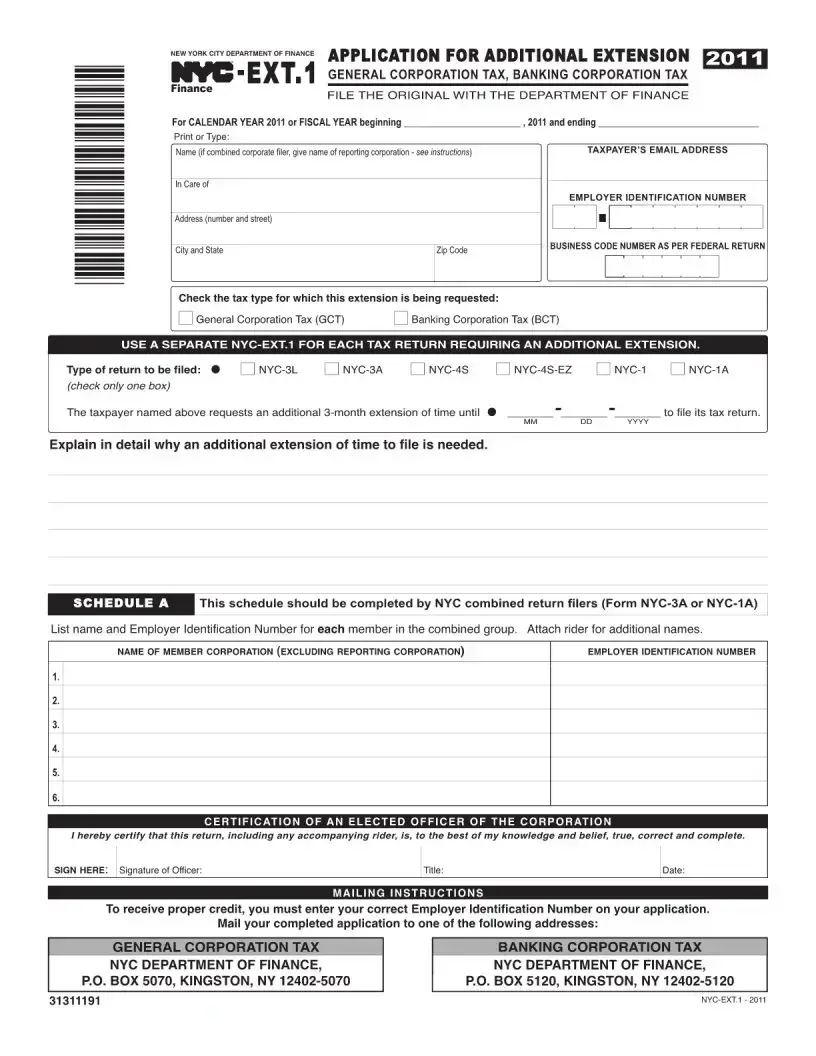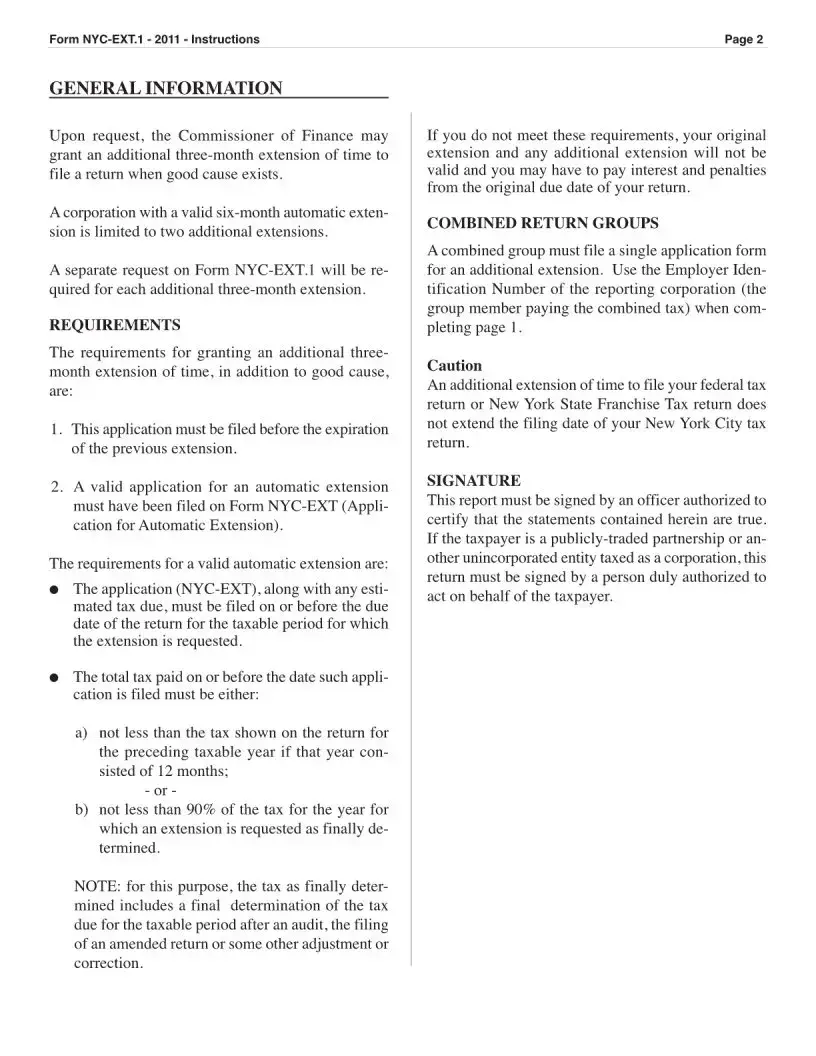In navigating the complexities of tax compliance and extensions within New York City, individuals and businesses alike turn to the NYC EXT 1 form for relief. This pivotal document plays a crucial role in seeking additional time to file one's taxes, laying out a process that, while straightforward on the surface, requires keen attention to guidelines and deadlines. Intended for use within the vibrant and bustling business environment of NYC, the form offers a lifeline to those who find themselves unable to meet the standard filing deadline. It acts not just as a request for extension but also stands as a testament to the city's understanding of the unpredictable nature of business and personal affairs. By providing essential details about how to properly fill out and submit the form, applicable deadlines, and the implications of its usage, entities can ensure they take full advantage of the extended timeframe without falling foul of regulations. Moreover, this extension doesn’t apply to the payment of taxes, emphasizing the importance of understanding the distinction between filing an extension and postponing tax payments. Through this form, New York City offers a manageable way for taxpayers to navigate through their fiscal responsibilities, ensuring that every individual and business has the opportunity to comply with tax laws without unnecessary hardship.

